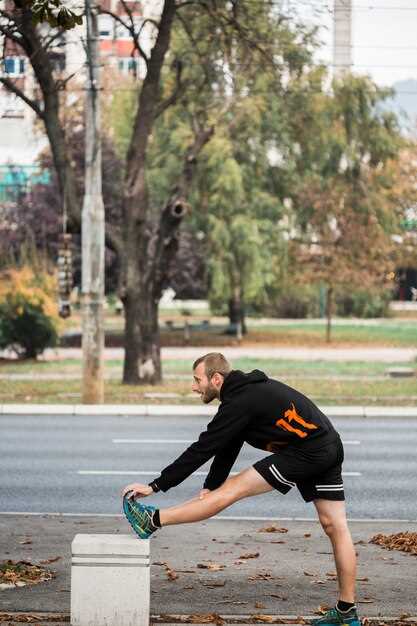
In the world of racing, the ability to master late braking techniques can be the decisive factor that separates the champions from the rest. An effective late braking maneuver not only allows drivers to carry more speed into corners but also presents opportunities to gain valuable positions on the track. This skill involves a delicate balance of timing, vehicle control, and understanding the racing line.
To truly excel, a thorough comprehension of the optimal lines that each track offers is essential. By analyzing the nuances of your chosen circuit–such as elevation changes, cornering radii, and track surface conditions–you can better prepare yourself for the demands of late braking. Each corner requires a unique approach, and recognizing the perfect moment to apply the brakes can drastically improve your overall lap times.
In this article, we will delve into the intricacies of late braking techniques, exploring the mental and physical aspects required to execute them effectively. From honing your awareness of the car’s dynamics to fine-tuning your braking distances, we’ll equip you with the knowledge necessary to enhance your on-track performance and achieve success in competitive racing.
Understanding the Physics of Late Braking

Late braking involves applying the brakes at the last possible moment before entering a corner, demanding a precise understanding of various physical principles. This technique is critical in racing as it maximizes speed while minimizing lap times.
At the heart of late braking is deceleration. When a driver engages the brakes, the vehicle experiences negative acceleration, which is essential for reducing speed effectively. The force exerted by the brakes must overcome the inertia of the car to slow it down. Understanding the friction between the tires and the track surface is crucial; high grip levels allow for more aggressive braking without losing control.
Another key factor is weight transfer. When braking, the car’s weight shifts forward, increasing the load on the front tires. This enhances their grip and allows for sharper turning capabilities. However, if too much weight is transferred too quickly, it can lead to loss of traction and potential oversteer, resulting in a loss of control.
Additionally, the concept of braking distance comes into play. The distance required to stop depends on speed, tire conditions, and track surface. Late braking can shorten the available space to decelerate, which necessitates precision in timing and execution. A driver must calculate not only how late they can brake but also how to effectively manage the car’s stability throughout the process.
Furthermore, brake balance is an essential consideration. The ideal distribution of braking force between the front and rear tires will influence how the car behaves under braking. A well-balanced setup allows for more confidence when braking late without risking a skid or spin.
Ultimately, mastering late braking involves a combination of understanding the vehicle dynamics, the physics of motion, and the intricate relationship between speed and control. This knowledge can significantly enhance a driver’s racing effectiveness, allowing them to navigate corners at optimal speeds while maintaining the ability to respond to any mid-corner changes.
Finding the Ideal Racing Line for Optimal Braking

To master late braking techniques, understanding the concept of the ideal racing line is crucial. The racing line is the fastest path around a track, carefully structured to maximize speed while minimizing braking distances. Finding this line requires a strategic approach to cornering, ensuring the vehicle is positioned correctly for optimal braking.
Entering a turn, drivers should aim for the apex, the point where they achieve the closest proximity to the inside of the corner. Establishing this reference point helps dictate where and when braking should occur. The ideal racing line often involves a gradual entry that allows for smoother transitions from braking to acceleration, reducing the likelihood of losing traction.
Moreover, factors such as track conditions, tire wear, and vehicle dynamics play significant roles in determining the optimal racing lines. Adjustments may be necessary based on these variables to maintain control while maximizing speed. Consistent practice is essential; drivers need to experience various layouts to develop a keen sense of optimal braking points and how they relate to the chosen racing lines.
Incorporating techniques like trail braking can further enhance the effectiveness of using the ideal racing line. By lightly applying the brakes while turning, drivers can maintain better balance and grip, allowing for later brake application without sacrificing stability. This technique, when combined with an understanding of racing lines, can substantially improve lap times.
Ultimately, finding the ideal racing line is an ongoing process that demands both analytical thinking and practical experience. Drivers who dedicate time to understanding the nuances of track layout, combined with effective late braking techniques, will find themselves achieving greater success on the track.
Practicing Late Braking: Techniques and Drills
Late braking is a crucial skill for racing enthusiasts aiming to improve their performance on the track. Mastering this technique requires focused practice and a strategic approach to understanding braking points and lines. Here are some effective techniques and drills to enhance your late braking abilities.
Technique 1: Understanding Braking Zones
Begin by familiarizing yourself with the layout of the track. Identify key braking zones where you can push your limits. Visualize the ideal braking point for each corner. Use a reference marker, such as a trackside cone or pavement change, to help gauge your distance from the corner.
Technique 2: Progressive Braking
When approaching a braking zone, practice applying the brakes progressively. Start with light pressure, gradually increasing as you approach the optimal braking point. This method helps maintain control and balance while allowing the tires to grip. Focus on modulating pressure with your foot to refine your braking sensitivity.
Drill 1: Braking Practice on a Straight
Select a straight section of the track to practice your braking technique. Accelerate to a high speed and then brake hard at a predetermined distance. Measure the stopping distance and analyze your performance. Repeat this drill, gradually pushing your braking point closer to the corner while ensuring you maintain control.
Drill 2: Incorporating Corners
Once comfortable with straight braking, move to a series of corners. Focus on one corner at a time. Approach each with the pedal application techniques you’ve practiced. Adjust your lines within the corner to optimize speed while practicing late braking. This will aid in understanding how different braking points affect your trajectory and exit speed.
Technique 3: Analyzing Your Lines
Examine your racing lines through corners to identify how late braking impacts your path. Late braking can alter your entry and mid-corner speeds, allowing for tighter lines. Consider experimenting with different lines to discover the optimal combination for each corner that pairs with your braking technique.
Drill 3: Partner Feedback
Team up with a fellow racer or coach for constructive feedback. Take turns driving while the other observes. Record your braking points and lines, then review the footage together. This analysis can provide insights into your braking efficiency and cornering technique, making adjustments easier to spot and implement.
By consistently practicing these techniques and drills, you can develop the skill of late braking, enhancing your overall track performance and setting you up for success in competitive racing scenarios. Reach for precision in your braking, and refine your lines for the ultimate advantage on the track.











